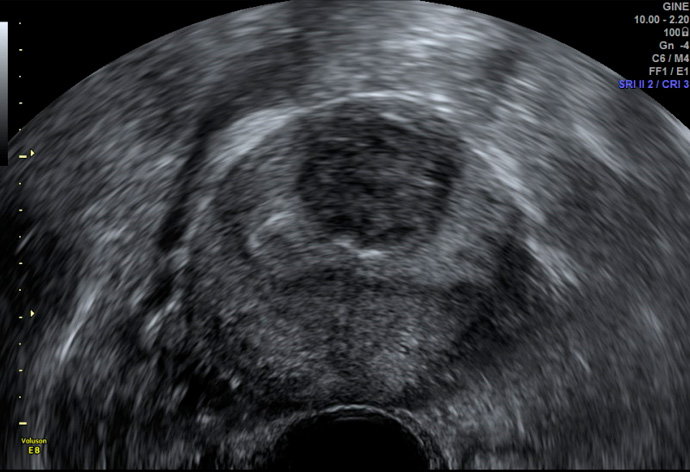
At Dexeus Mujer, two techniques are routinely applied to maintain haemostasis: temporary clipping of both uterine arteries at their origin and of the ovarian vessels at the pelvic infundibulum, and intramyometrial epinephrine injection before performing the hysterectomy. Both procedures are safe and lead to complications only in a small number of cases. owever, epinephrine injection is associated with side effects such as hypertension, bradycardia, arrhythmia and cardiac arrest. Clipping is an alternative, but until this study it was not known whether the rate of haemorrhagic complications could be similar, and it is a less widespread option because it requires experience in its application.
In total, 625 patients who underwent surgery between January 2009 and December 2019 were analysed for this study. Their mean age was 37.82 years and 69.8 % had symptoms. The most common symptoms were bleeding (33.2 %), increased pelvic volume (24.2 %) and fertility problems (24 %).
The authors of the study concluded that temporary clipping of both uterine arteries at their origin and of the ovarian vessels is the best technique to reduce the risk of bleeding during surgery, although it is not a widespread procedure, as it requires experience in the application of this technique. They also concluded that laparoscopic myomectomy is a safe technique, which in general offers great surgical and subsequent reproductive success. However, they admit that their study has several limitations, as it is a single-centre study, mainly descriptive, and based on their own experience. Therefore, they point out that further studies are needed to reach definitive conclusions.
Reference study:
Evolution of laparoscopic myomectomy and description of two hemostatic techniques in a large teaching gynecological center
Sandra Coll, Silvia Feliu, Claudia Montero, Maria Pellisé-Tintoré, Francesc Tresserra, Ignacio Rodríguez, Pere Nolasc Barri-Soldevila.
Eur J Obstet Gynecol Reprod Biol. 2021 Aug 26;265:181-189. doi: 10.1016/j.ejogrb.2021.08.023..
DEXEUS CAMPUS
Gran Vía de Carles III 71-75
08028 Barcelona
campus@dexeus.com
(+34) 93 227 47 09
® Copyright 2021-2024 Dexeus Mujer Foundation – Gran Via Carles III 71-75. 08028 Barcelona. Spain
| Cookie | Duration | Description |
|---|---|---|
| cookielawinfo-checkbox-analytics | This cookie is set by the GDPR cookie consent plugin. The cookie is used to store the user's consent for cookies in the "Analytics" category. | |
| cookielawinfo-checkbox-functional | The cookie is set by the GDPR cookie consent to record user consent for cookies in the "Functional" category. | |
| cookielawinfo-checkbox-necessary | This cookie is set by the GDPR cookie consent plugin. Cookies are used to store the user's consent for cookies in the "Necessary" category. | |
| cookielawinfo-checkbox-others | This cookie is used by the GDPR component. It is used to store the user consenting cookies in the "Other" category. | |
| cookielawinfo-checkbox-performance | This cookie is set by the GDPR cookie consent plugin. The cookie is used to store the user's consent for cookies in the "Performance" category. | |
| elementor | ||
| viewed_cookie_policy | The cookie is set by the GDPR cookie consent plugin and is used to store whether or not the user has consented to the use of cookies. It does not store any personal data. |
| Cookie | Duration | Description |
|---|---|---|
| _icl_visitor_lang_js | To allow multi-language functionality for web content. | |
| wpml_browser_redirect_test | Used to verify if cookies are allowed in the browser. |
| Cookie | Duration | Description |
|---|---|---|
| _ga | The _ga cookie, installed by Google Analytics, calculates visitor, session and campaign data and also tracks site usage for the site's analytics report. The cookie stores information anonymously and assigns a randomly generated number to recognize unique visitors. The _ga cookie, installed by Google Analytics, calculates visitor, session and campaign data and also tracks site usage for the site's analytics report. The cookie stores information anonymously and assigns a randomly generated number to recognize unique visitors. | |
| _ga_1WD9MFDMJK | This cookie is installed by Google Analytics. |
| Cookie | Duration | Description |
|---|---|---|
| wp-wpml_current_language | Necessary for the operation of the website in the different languages |